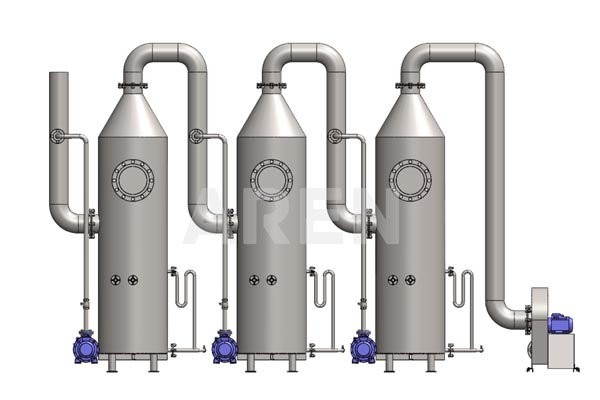Odour Handling
-
Raw Material Handling
-
Cooking
-
Pressing
-
Defatting
-
Meal Handling
-
Vapour Handling
-
Odour Handling
-
Conveyors & Pumps
-
Control Panel & Automation
Odour Handling
Chemical Scrubber

Chemical scrubbers are used in the rendering facility to treat non-condensable gases and odours.
In the rendering industry, a chemical scrubber, also known as a wet scrubber, is a type of air pollution control system used to mitigate odorous and potentially harmful emissions. A chemical scrubber is designed to remove pollutants from exhaust air before they are released into the atmosphere.
A chemical scrubber works by passing the contaminated air stream through a liquid solution, typically a chemical reagent or solvent. The pollutants in the air, including odorous compounds and particulate matter, come into contact with the liquid and undergo a chemical reaction or absorption process. This reaction or absorption removes or neutralizes the pollutants, effectively cleaning the air before it is discharged.
The specific chemicals used in a chemical scrubber can vary depending on the pollutants targeted for removal. For example, in the rendering industry, where strong odors are a concern, commonly used scrubbing agents include alkaline solutions such as sodium hydroxide (caustic soda) or acidic solutions like sulfuric acid.
Chemical scrubbers are recognized for their ability to effectively remove a wide range of pollutants, including odorous compounds, gases, and particulate matter. They are commonly used in the rendering industry, to meet regulatory requirements, minimize environmental impact, and address community concerns related to air pollution and odor emissions.

